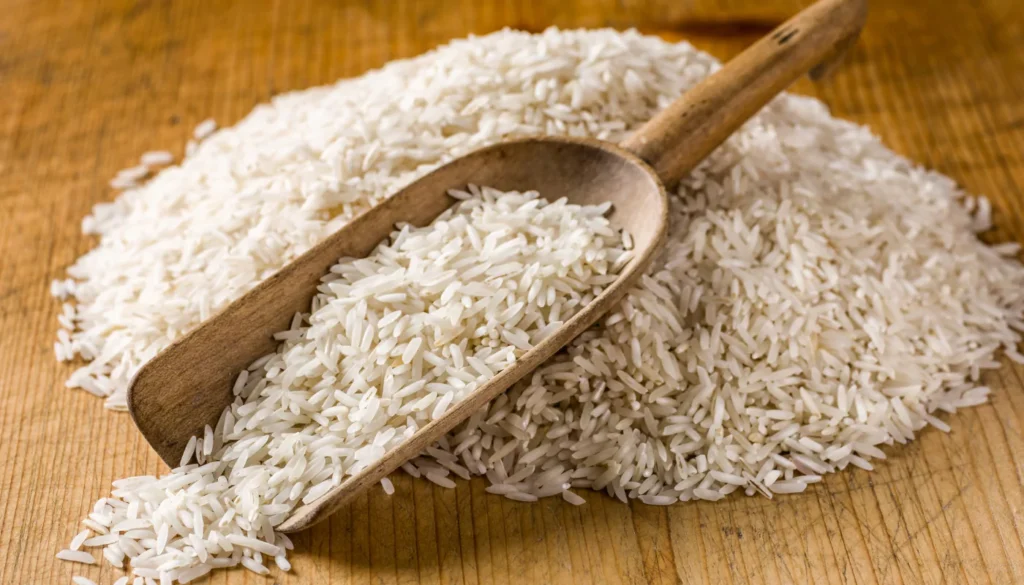Many people want to know more about themselves. The Rice Purity Test can help with this. This test has 100 questions about life and choices. It shows how experienced you are in different areas.
Keep reading to learn why this test is so talked about today.
Key Takeaways
- The Rice Purity Test started in 1924 as a fun quiz. It measures how innocent someone is through 100 questions about life experiences.
- Scores from the test show if you have more or less experience in certain things. A low score means more experience, and a high score means less.
- People worry the test might make others feel bad, especially women. They think it focuses too much on shame instead of growth.
- Many look for other ways to learn about themselves that don’t judge. These include journals, talks with friends, workshops, and online quizzes.
- Social media helps spread the test among teens today. Yet some believe it pressures people to fit into certain roles or feel left out.
What is the Rice Purity Test?

The Rice Purity Test is a quiz that measures how innocent someone is. It helps people see their experiences with things like drugs and sexual activities.
Origin and history
The Rice Purity Test started in 1924. It began as a fun way to measure the purity of rice. Over time, it changed into a self-administered quiz about personal experiences. Today, this test has 100 questions that look at one’s level of “innocence.” It includes topics like sexual activities and drug use.
As college life grew, so did the popularity of the Rice Purity Test. Students often use it during O-week to bond with new friends. However, some people criticize it for promoting shame, especially towards women.
Despite this, many see it as a chance to track personal growth and reflect on their journey through adulthood.
Cultural phenomenon
The Rice Purity Test has become a cultural phenomenon since it started in 1924. This test is a fun way for college students to bond during O-week. It includes 100 questions that measure personal experiences and levels of “innocence.” Many people take it as a self-administered quiz to assess their growth.
Over time, the test evolved. It now asks about sexual activity and topics creators may not have known about before. Some view it as an opportunity for reflection. Others criticize it because it can lead to shame, especially for women.
Despite this issue, many still find value in exploring their personal boundaries through the Rice Purity Test.
Purpose and significance
This test serves a unique purpose in today’s culture. It helps people bond during O-week events. The Rice Purity Test encourages fun conversations about personal growth. It also acts as a self-evaluation tool for individuals to understand their “innocence” level.
The significance of this test has grown since its creation in 1924. Many now use it to reflect on their experiences as they enter adulthood. College students, in particular, find value in sharing scores with friends.
This creates a sense of community and understanding among peers, even though some critics argue it can shame individuals, especially women, based on their past experiences.
Understanding the Rice Purity Score
The Rice Purity Score shows how many experiences a person has had. A low score means more experience, while a high score suggests innocence.
What it measures
The Rice Purity Test consists of 100 questions. These questions measure a person’s level of “innocence” or experience with different topics. It looks at activities related to relationships, substance use, and other life experiences.
People take this self-administered quiz to see how they compare with their peers.
Scores can give insight into personal growth and past experiences. Higher scores indicate more innocence, while lower scores show more life experience. The test became popular in college settings as a fun way to bond during O-week and understand each other’s journeys into adulthood.
Average scores by country, age, and gender
After discussing what the Rice Purity Test measures, it’s interesting to look at how different groups score on average. This information helps further understand the test’s impact across various demographics.

| Country | Age | Gender | Average Score |
|---|---|---|---|
| United States | 18-22 | Female | 75 |
| United States | 18-22 | Male | 72 |
| Canada | 18-22 | Female | 78 |
| Canada | 18-22 | Male | 74 |
| United Kingdom | 18-22 | Female | 77 |
| United Kingdom | 18-22 | Male | 73 |
Scores vary by country, age, and gender. These differences show how cultural and social factors might influence personal experiences. They also highlight the test’s role in discussions about growth and experiences among young adults.
The Popularity of the Rice Purity Test Today
The Rice Purity Test is very popular with teens today. Social media helps it spread quickly, making more people want to take the quiz.
Influence of social media and internet culture
Social media and internet culture play a big role in the popularity of the Rice Purity Test today. College students often share their scores online. This sharing creates trends and encourages others to take the test too.
The test has become a fun way to bond with peers during O-week groups. It allows people to see where they stand in terms of experiences. Many use it as an “innocence test” to assess personal growth.
Since its start in 1924, the Rice Purity Test has changed with time. Questions now include sexual acts that younger creators might not know about. Critics argue this can shame individuals, especially women, for their choices and history.
Despite this, many still find value in using the test within social media circles as part of exploring moral values and adolescent behavior.
Impact on adolescent behavior and moral values
The Rice Purity Test impacts how teens see their behavior and morals. Many young people take the test to fit in or show off. It often brings peer pressure into play, especially during college O-week.
The test has become popular among high school students as a fun way to gauge personal growth. However, it can also create feelings of shame for those who score low.
Scores reflect experiences that may influence decisions about relationships and actions. Some believe scoring lower could harm one’s reputation or status among peers. Critics argue this shaming aspect affects moral values negatively, especially for women.
The focus on innocence can make teenagers feel judged based on past choices instead of encouraging healthy discussions about their choices and experiences.
Controversies and Criticisms
Some people worry that the Rice Purity Test focuses too much on shame instead of celebrating innocence. Others point out that it can lead to misunderstandings about personal choices and experiences.
Focusing on shame rather than innocence
The Rice Purity Test can sometimes focus on shame instead of innocence. This shift can hurt individuals, especially women. The test started in 1924 as a way to gauge innocence. Over time, it became a cultural phenomenon that measures personal growth and experiences.
Critics argue it often shames people for their choices rather than celebrating their journey into adulthood.
Questions in the test may highlight actions seen as negative or immoral. Many feel this emphasis creates unnecessary judgment among peers. Instead of fostering connection, some use the test to point fingers at others’ pasts.
Thus, its role as an Innocence Test can lead to harmful consequences for those involved in high school Purity Tests or O-week activities.
Potential consequences and drawbacks
The Rice Purity Test can lead to negative consequences. Many people use it to shame others, especially women. This focus on shame can harm self-esteem and create anxiety. Participants might feel judged based on their answers.
Some may see the test as a way to measure growth. In reality, it often oversimplifies complex experiences. It does not account for personal values or choices in life. The test started in 1924 but now includes sexual acts that its creators didn’t know about back then.
This makes it outdated for today’s world and adds pressure on individuals trying to fit into social norms.
Alternatives for measuring personal boundaries and experiences
Many people seek different ways to measure personal boundaries and experiences. Some alternatives can provide better insights than the Rice Purity Test.
- Personal Reflection Journals
Keeping a journal allows individuals to express their thoughts and feelings. Writing entries about experiences helps track growth and explore personal values. - Peer Discussions
Talking with friends about experiences can be enlightening. These conversations allow for sharing stories without judgment, fostering understanding and support. - Workshops or Group Activities
Participating in workshops offers a chance to learn from others. These activities often focus on personal development, helping participants set boundaries in a safe space. - Online Surveys and Quizzes
Many online platforms offer quizzes that address various life topics. These self-administered quizzes help individuals explore their beliefs and comfort levels without shame. - Therapy or Counseling
Seeking professional help provides a deeper look into personal experiences. Therapists help individuals identify boundaries and work through feelings in a supportive environment. - Mentorship Programs
Joining a mentorship program connects individuals with experienced guides. Mentors can share wisdom on navigating adulthood, providing valuable insights into setting limits. - Support Groups
Support groups created for specific challenges allow members to share openly. This creates a sense of community where personal experiences are valued rather than judged. - Educational Workshops on Consent and Boundaries
Attending workshops focused on consent promotes healthy conversations about personal limits. Learning these principles offers tools to understand one’s boundaries in relationships. - Creative Expression (Art/Music)
Engaging in creative activities lets individuals explore feelings artistically. This form of expression often leads to self-discovery and a better grasp of one’s experiences. - Mindfulness Practices
Practicing mindfulness helps people connect with their thoughts and emotions directly. Techniques like meditation create space for reflection on personal journeys without comparison to others’ standards.
FAQs
-
What is the Rice Purity Test?
The Rice Purity Test is a self-administered quiz that people take voluntarily to gauge their innocence level.
-
Why did the Rice Purity Test start?
Oweek, or orientation week, at Rice University was when this quiz started. It was a fun way for students to learn about each other’s experiences.
-
How does the Rice Purity Test work?
The test works by asking you questions about your life experiences. Your answers help determine your innocence level.
-
Why is the Rice Purity Test so popular today?
Its popularity comes from its unique approach to understanding personal experiences and social norms in a non-judgmental way.

